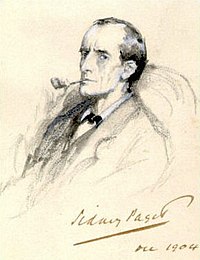This boundary doesn’t really exist. You already know way more poetry  that you give yourself credit for. As young children, we learn and read silly songs, nursery rhymes, and Dr. Seuss: It’s all poetry. Most songs, especially folk songs and hymns, have poetic lyrics. Our own hymn book includes lyrics written by noted poets such as Rudyard Kipling, John Henry Newman, and Alfred Tennyson. Then there are the scriptures. All of the Psalms are poetry. All of Isaiah is poetry. Much of the Book of Mormon is poetry. You probably love your favorite passage of scripture so much because it sounds so beautiful—because it’s poetry.
that you give yourself credit for. As young children, we learn and read silly songs, nursery rhymes, and Dr. Seuss: It’s all poetry. Most songs, especially folk songs and hymns, have poetic lyrics. Our own hymn book includes lyrics written by noted poets such as Rudyard Kipling, John Henry Newman, and Alfred Tennyson. Then there are the scriptures. All of the Psalms are poetry. All of Isaiah is poetry. Much of the Book of Mormon is poetry. You probably love your favorite passage of scripture so much because it sounds so beautiful—because it’s poetry.
So if poetry is everywhere and we still don’t understand it, what is it? A Handbook to Literature says that poetry is the "rhythmic expression" of a poet's "intense perception of the world, themselves, and the relation of the two" (Harmon 390). In other words, poetry is meant to be, like all forms of writing, a communication. The poet is trying to tell something to the reader—some thought or observation. However, a poet uses poetic forms and conventions that are different than everyday speech.
Here’s an example: Without knowing any literary terms, you can look at the poem below and see that its style is very different from prose, from the way I’m writing the rest of this article.
Be still, my soul: the Lord is on thy side.
Bear patiently the cross of grief or pain.
Leave to thy God to order and provide;
In every change, He faithful will remain.
Be still, my soul: thy best, thy heav’nly Friend
Through thorny ways leads to a joyful end.
This poem is the first stanza of “Be Still My Soul,” lyrics that were originally written in German by Katharina von Schlegel. See if you can read this stanza as if you don’t know the tune, as if you’ve never seen the poem before. Pause where the punctuation comes, just as you would when you read this sentence. After an initial reading, we can use this hymn to illustrate the four basics of poetry: rhythm, rhyme, inversion, and compactness (Harmon 391). Keeping these four basics in mind will help you understand and enjoy poetry more.
 The first basic to reading poetry is rhythm. There are complex explanations of poetic rhythm with a lot of terms, but if you just want to learn to recognize poetic rhythm, you only need to look at what we call stressed and unstressed words and syllables. When we read and speak, we naturally give different words in different parts of the sentences more or less time and emphasis. For example, when you say, “Go to your room,” naturally you’d stress the words (and syllables) “go” and “room.” Take a look at the poem. Below I’ve highlighted the stressed syllables of the first line in bold. Notice that this is the natural way of saying the words:
The first basic to reading poetry is rhythm. There are complex explanations of poetic rhythm with a lot of terms, but if you just want to learn to recognize poetic rhythm, you only need to look at what we call stressed and unstressed words and syllables. When we read and speak, we naturally give different words in different parts of the sentences more or less time and emphasis. For example, when you say, “Go to your room,” naturally you’d stress the words (and syllables) “go” and “room.” Take a look at the poem. Below I’ve highlighted the stressed syllables of the first line in bold. Notice that this is the natural way of saying the words:
Be still, my soul: the Lord is on thy side.
Without knowing too many literary terms, you can appreciate this poem’s rhythm. Every other syllable in the line is stressed. This pattern follows throughout every line of the poem.
If you count the pairs of unstressed and stressed syllables, there are five pairs on each line and exactly ten syllables on each line. The technical term for this poetic form—five unstressed/stressed syllable pairs in on each line—is iambic pentameter, a very popular form in Western poetry and the exact form that Shakespeare used for nearly all of his works. Recognizing how beautiful the poem reads while knowing that the poet had a hard time conforming to a strict rule of rhythm can help you appreciate the poem even more and can help you understand the other three basics of poetry: rhyme, inversion, and compactness.
Here is the poem again. This time I’ve highlighted in color the pairs of rhymes at the end of each line:
Be still, my soul: the Lord is on thy side.
Bear patiently the cross of grief or pain.
Leave to thy God to order and provide;
In every change, He faithful will remain.
Be still, my soul: thy best, thy heav’nly Friend
Through thorny ways leads to a joyful end.
Finding rhymes at the end of each line is really easy, but there are more rhyming techniques in the poem that you hear and feel. There are other sounds that match in the poem that add to its beauty, see the color matches below:
Be still, my soul: the Lord is on thy side.
Bear patiently the cross of grief or pain.
Leave to thy God to order
and provide;
In every change, He faithful will remain.
Be still, my soul: thy best, thy heav’nly Friend
Through thorny ways leads to a joyful end.
You’ll notice how colorful the poem is! While not all the connections may have been intentional, you can be sure that the like sounds that occur on the same line (the underlined pairs)
were intentionally placed there by the poet.
The third poetry basic is inversion. Inversion means that poems are
often written in a word order different than we would normally speak. For example, the fourth line of “Be Still My Soul” reads: “In every change, He faithful will remain.” In ordinary speech, you would say it this way: “He will remain faithful in every change.” Inversion is why poetry often sounds so foreign to us: Poets use words in a different order than we normally speak them. However, inversion allows the poet to stretch the words and composition of the poem to facilitate the other three basics of poetry—rhythm, rhyme, and compactness. “He will remain faithful in every change” instead of the inverted “In every change, He faithful will remain,” would destroy the overall rhyme scheme of the poem. If you find that you don’t understand what a poem is saying, try looking for inversion. See if you can rearrange the poem’s contents so you can understand its meaning better.
Finally, poems are compact. Each stanza of “Be Still My Soul”
is only six lines long. This is important because the rhyme scheme has four lines where every other end of the line rhymes and the fifth and sixth lines rhyme right in a row. For each verse, the poet had to communicate an idea in only six lines with ten syllables per line. Because I’m not a poet, I would communicate what this poem is saying in prose, like this:
I’ve been having a really hard time the last few weeks, and I feel like I need to tell myself to calm down. I need to remember that God is there and mindful of me. I need to be patient when I’m upset or hurting and leave it to the Lord to make everything right and take care of my needs. I need to remember that He is always there and will not leave me alone. Heavenly Father will lead and guide me and make everything all right.
 First of all, my prose version of the poem is not that pretty. Secondly, it’s not very memorable. All four basics of poetry—rhythm, rhyme, inversion, and compactness—help make the poem, and what the poet wants to communicate to the world, memorable. You’ve probably never sat down to memorize this hymn, but you probably know at least the first verse by heart. The tune of the hymn also helps you remember the poem, but it is the original four basic qualities of the poem that allow it to be set to music so easily.
First of all, my prose version of the poem is not that pretty. Secondly, it’s not very memorable. All four basics of poetry—rhythm, rhyme, inversion, and compactness—help make the poem, and what the poet wants to communicate to the world, memorable. You’ve probably never sat down to memorize this hymn, but you probably know at least the first verse by heart. The tune of the hymn also helps you remember the poem, but it is the original four basic qualities of the poem that allow it to be set to music so easily.
Keep the four basics of poetry—rhythm, rhyme, inversion, and compactness—in mind as you encounter poetry in the future in books, songs, hymns, and scripture. Knowing the basics of poetry will help you understand the beauty of poetic language and the meaningful and memorable messages of poetry.
Works Cited
Harmon, William and Hugh Holman. “Poetry.” A Handbook to Literature. 9th ed. Upper Saddle River, NJ: Prentice Hall, 2003, 390-392.
Von Schlegel, Katharina. “Be Still My Soul.” Hymns. The Church of Jesus Christ of Latter-Day Saints, 124.















1 comment:
I have never quite understood why poetry was difficult for me nor how to make it easier. This post solves my problem completely and increases my appreciation for all poets and also those that make poetry appealing to me by helping me understand and comprehend its principles.
Post a Comment